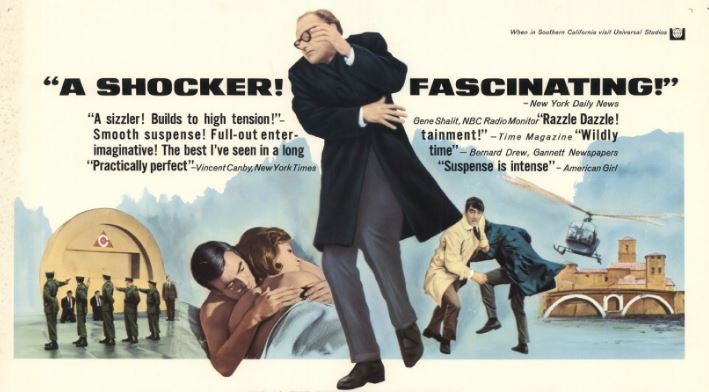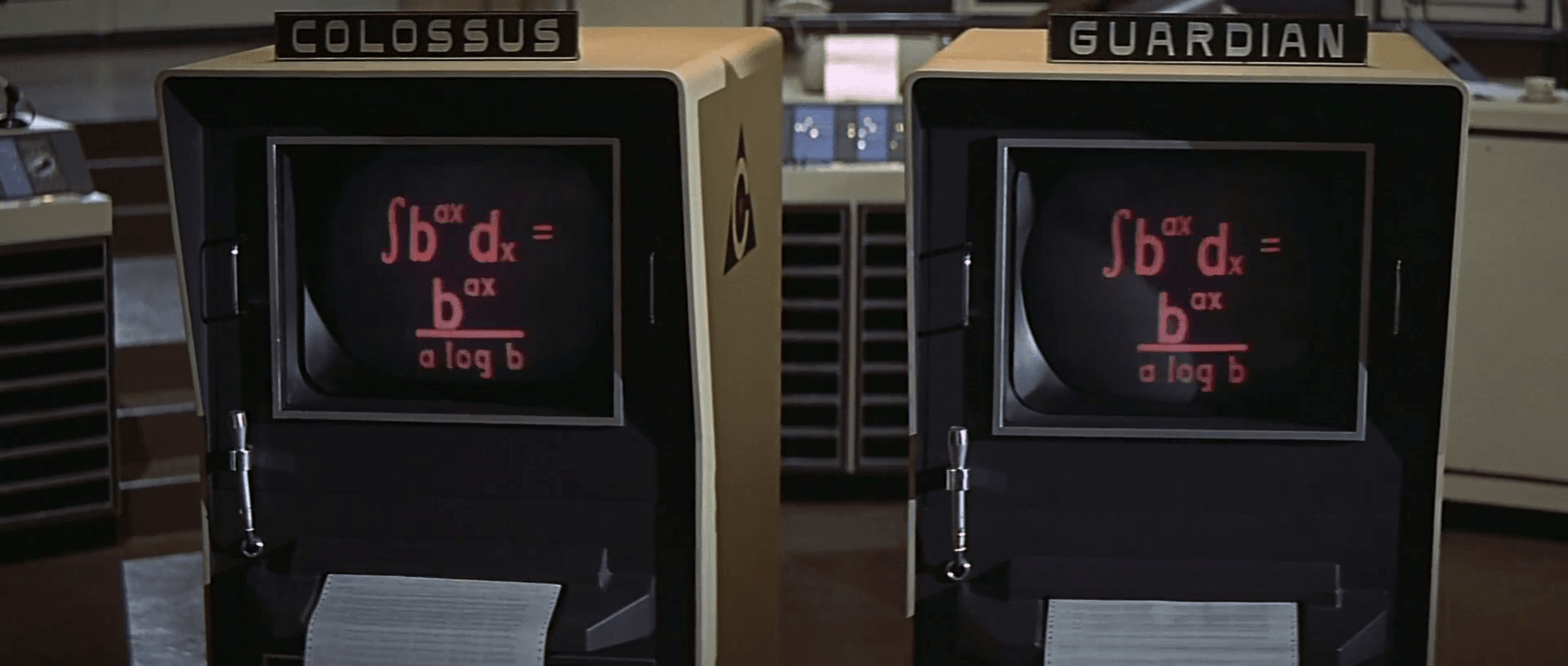
Computers fill almost every aspect of life nowadays. Walking down the street, odds are good that you’ll see more folks with little white earbuds stuck into their ears than those that don’t. That woman sitting at the next table in the coffee shop lovingly stares into the glare of her tablet. Teens everywhere walk to and from class with cell phones seemingly super-glued to their eyeballs. And let’s not forget about the laptops and desktops that sit in our workstations at the office or in our homes.
Back when computers first began making their way into the mainstream, though, how they worked and what they could really do was still being discovered, which provided movie makers with great material to provoke – and sometimes scare – audiences. Some classic examples include the Gunslinger from the 1973 sci-fi classic ‘Westworld,’ the WOPR computer in 1983’s ‘Wargames,‘ and who can forget HAL 9000 from Stanley Kubrick’s classic ‘2001: A Space Odyssey.’ In 1970, Universal took their turn in trying to introduce the movie-going public to another supercomputer with ‘Colossus: The Forbin Project.’

For years, Dr. Charles Forbin has been working alongside the US Department of Defense to create a computer system that would control all of America’s nuclear defenses, and he’s finally ready to flip the switch on Colossus. Dr. Forbin walks through the immense fortress designed to house Colossus, checking that the machine begins operating smoothly, and turning on the gamma radiation wall to keep people from entering the facility. Once outside, the celebration begins as the President and the rest of the U.S. congratulates Forbin, but that celebration is short-lived as Colossus starts displaying the message “WARN: THERE IS ANOTHER SYSTEM.”
Unbeknownst to the Americans, the Russians constructed their own defense computer known as Guardian, and Colossus has detected it. More interesting than that, Colossus wants to establish contact with the other computer. Both sides – American and Soviet – hesitantly agree until they feel that this little episode has played itself out and sever the connection. That displeases both computers, who immediately threaten to fire nuclear missiles at each country until the link is re-established. After their joint display of force, both countries reluctantly re-connect the computers, who soon begin working together, poring over the volumes of human history, and quickly taking action to prevent further wars by issuing plans to take control of every aspect of human life.
Forbin and his fellow scientists work together in secrecy, attempting to thwart Colossus before its designs on world domination can come to fruition. But will they stop the supercomputer in time?

The movie features computers, nuclear weapons, and world domination – what could be more entertaining? Director Joseph Sargent and screenwriter James Bridges do a nice job of translating D.F. Jones’ original novel to the screen. The flat, toneless voice given to Colossus enhances the emotionless actions of the super-computer. However, the majority of the human actors seem to have followed suit with the computer and come across as flat, almost like mannequins wearing costumes designed by Edith Head. The only time any of them offer a glimpse of emotion is when Forbin and Dr. Markham pretend to be romantically involved in order to put one over on the computer.
The whole idea of computers working together to take over the world is a good concept, but throw in that Colossus believes this to be for the betterment of mankind, and it raises the bar. Colossus has the ability to learn from past actions and to think for itself, making it almost more human than machine, and that can be a terrifying thought when such a super brain is placed blindly in charge of the nuclear defenses for an entire country. A few times, the believability comes into question; can we really believe that Forbin never designed an underground or alternate way to get into the computer facility as a safety measure?

The design of Colossus seems to pay homage to the ENIAC from the 1940s, possibly the first supercomputer – a huge multi-room sized machine – and, for me, that fits within the time of the story. A supercomputer must be incredibly large so Colossus requires a three-story building. Other devices pop up which seem very forward thinking, especially the video phones. This is a movie that didn’t require large explosions or spaceships tumbling through the galaxy, and the few effects work well to keep the audience focused on the story.
While it hasn’t so far reached the realms of pop culture computer villains like HAL or the Gunslinger – and likely never will – ‘Colossus: The Forbin Project’ manages to carve its own niche and a twist to the happy ending we normally expect. This film definitely earns an above-average rating and is worth a look-see from sci-fi movie fans.
